Learn about the toxins in your home and how to avoid them.
This post contains affiliate links. See my full disclosure HERE.
Toxins in Your Home Part 1
My sister Laura from Our Oily House is back again to share about all the toxins lurking in our homes, their effects on our health and how to avoid them.
The average American is exposed to over 500,000 chemicals on a daily basis! The exposure starts the second you wake up and continues until you go to bed at night.
Toxins are found in the food we eat, beauty products we wear, household cleaners, soaps, lotions, and so much more!
[thrive_lead_lock id=’12965′]Hidden Content[/thrive_lead_lock]
I am going to take you through your home showing you what these toxins are, where they can be found, how to get rid of them, and what to use instead!
Household Cleaners
I am going to start with the obvious one…household cleaners.
We all know that cleaners have chemicals in them, and that we should keep them away from children, but I bet you don’t know the lasting effects these cleaners can have on your body and overall health.
Under the kitchen sink most of us will find an array of supplies including bleach, oven cleaner, toilet bowl cleaner, carpet cleaner, glass cleaner, polishes, detergents, and soaps to keep the house sparkling and smelling good.
Yes these cleaners work well, and remove the worst of stains, but they also lead to indoor air pollution that is poisonous to ingest, and that lingers in our homes.
Common Household Cleaners
1) Bleach
Bleach is made by sending a direct electrical current through table salt and water causing it to spilt. This creates two atoms known as chlorine and caustic soda, both which are extremely dangerous. Bleach is a deadly chemical that can be found in almost every supermarket and drugstore! Have you ever used bleach in a closed in area, like the shower, and it caused you to cough? When mixed with ammonia, it creates a deadly gas that can cause lung damage. Overexposure can lead to asthma, allergies, impaired gut function, dizziness, headaches, heart attacks, damage to the kidneys and liver, cause birth defects, and even death. The chemical can cause major damage to the skin, or eyes, and literally burn the skin. You can find nearly 15,000 products containing this deadly toxin, including bathroom cleaners, sprays, laundry detergents, and disinfectant wipes. You know the wipes you use to sanitize your cart at the grocery store so when your child licks the handle they won’t get sick?? Yup, even those have bleach in them!
2) Oven Cleaner
This could be the most hazardous item in your home! After a little research my oven cleaner went straight to the outside trash can! The toxins found in conventional oven cleaner are etanolamine, morholine, butoxdidlycol. and lye. All these toxins can wreak havoc on our respiratory systems, and cause cancer. They can damage the digestive system, vision, and nervous system. Instead of using conventional oven cleaner, try the recipe in my FREE cleaning with essential oils ebook at the end of this post.
3) Toilet Bowl Cleaner
The warning label on this cleaner actually says “harmful or fatal if swallowed.” The poisonous ingredients in these products are detergents, isopropyl alcohol (IPA), and phenol. IPA is a common chemical that’s found in many cleaning products. IPA poisoning can occur when it is ingested and can slow breathing, cause dizziness, severe stomach pain, a coma, and death. Phenol is toxic even when diluted. It’s vapor are corrosive to the eyes, skin, and respiratory tract. Inhaling this alone can cause asthma attacks, coughing fits, and long-term damage to the lungs. Instead of using store bought toilet cleaner, try the recipe in my FREE cleaning with essential oils ebook at the end of this post.
4) Carpet Cleaner
Most carpet cleaners leaves behind dangerous fumes and residue that can cause serious problems to your health and immune system. Chemicals found in these cleaners include perchloroethylene, phthalates, triclosan, ammonia, chlorine, and sodium hydroxide. These toxins can cause nausea, dizziness, and fatigue. This can affect indoor air quality, causing issues to major organs such as lungs, liver, kidneys, and even your brain.
5) Glass Cleaner
I absolutely hate handprints and water marks on my windows and mirrors; with children in the home cleaning glass is a daily job. I wasn’t happy what I found when I read the ingredients list on the back of my Windex bottle and realiing that everytime I sprayed this cleaner I was polluting the air within my home and harming myself and my family. Instead of using conventional glass cleaner try the recipe in my FREE cleaning with essential oils ebook at the end of this post.
6) Laundry Detergents
Ok, I’ll be the first to admit that I love the smell of freshly washed sheets hanging on the line, sheets washed in Tide, that is! But, are you ready for the list of ingredients found in one container of Tide? Water, alcoholethoxy sulfate, linear alkylbenzene sulfonate, propylene glycol, citric acid, sodium hydroxide and borax. Other ingredients include ethanolamine, ethanol, alcohol sulfate, polyethyleneimine ethoxylate, sodium fatty acids, diquaternium ethoxysulfate and protease. All those words you can’t pronounce are the things you want to stay away from. Several of them are carcinogenic chemicals and others are toxic hazardous chemicals. As you wash and dry these clothes in your home the smell that lingers in the air is toxic and is being inhaled by you and your family. The chemicals stay in your clothes and rub off onto your body as you wear them. When you sweat this even gets worse, as your glands are open, and the chemicals can absorb through your skin. Save your body the toxins and your money by making this homemade laundry soap!
7) Antibacterial Soaps
Antibacterial soap is a type of cleaning product that contains chemical ingredients that assist in killing bacteria. Sounds like a good thing, right? Isn’t bacteria bad? Our gut is made up of bacteria, and in the perfect world the bacteria is 80% good and 20% bad. The problem with the ridiculous about of antibacterial chemicals we use is they are actually killing off that good bacteria that the body needs for proper immune function. We can find antibacterial soaps, wipes, lotions, dish soaps, face wash, and body wash. They are everywhere, and way over used! The chemicals found in these products include triclosan, triclocarbon, and chlorxylenol. These chemicals are known to alter hormone regulations, and have been linked to heart disease and heart failure. When a study was done on mice, it was shocking to see that after they were exposed to just one dose of triclosan heart muscle function was reduced by 25%. Plus, studies have found that these soaps are no more effective at killing off viruses than other kinds of soaps and detergents. In fact, they will make you more susceptible as your gut bacteria becomes imbalanced.
Chemicals found in household cleaners
1) Phthalate is a salt or ester of phthalic acid. You can find phthalates in many products throughout your home, and a lot of new research is documenting their large amount of negative health impacts. Over exposure can damage the liver, kidneys, lungs, and reproductive system.
2) Perchloroethylene is a colorless liquid with a sweet, ether-like odor. It is very commonly used in dry cleaners, but also found in soaps, detergents, and various household cleaners. Short-term exposure in a large amount can effect the nervous system and cause dizziness, unconsciousness, and death. Exposure can cause build-up within the body and lead to an array of long lasting health issues effecting the lungs, liver, kidneys, respiratory system, and eye damage.
3) Triclosan can be extremely dangerous to your gut, and overall health. As mentioned above, this chemical is found in anything labeled “antibacterial.”
4) Ammonia is a compound of nitrogen and hydrogen. Inhaling ammonia can immediately burn the nose, throat, and respiratory tract. Being exposed to it can damage major organs within the body, and can result in blindness if it gets in the eyes.
5) Chlorine is a toxic chemical that Americans are exposed to daily! Chlorine is a disinfectant that is added to drinking water, soaps, and cleaners. Bleach releases chlorine gas, which can cause labored breathing, chest pains, cough, lung damage, and skin and eye irritation.
Make Your Own Cleaners
Making your own cleaners may seem daunting but, let me tell you, that it really is easy to do!
I can whip up a batch of dish soap, if I run out during dinner clean up, in one minute!
Cleaners last awhile, so this won’t be a weekly task.
And the best part is you won’t have to worry, as much, if you have toddlers in your home. I love knowing that I have all natural ingredients under my sink, just in case one of my littles would get under there.
When you switch to all natural cleaners, the toxin level in your home will drop dramatically!
Stay tuned to find more healthy solutions to rid toxins in your home.

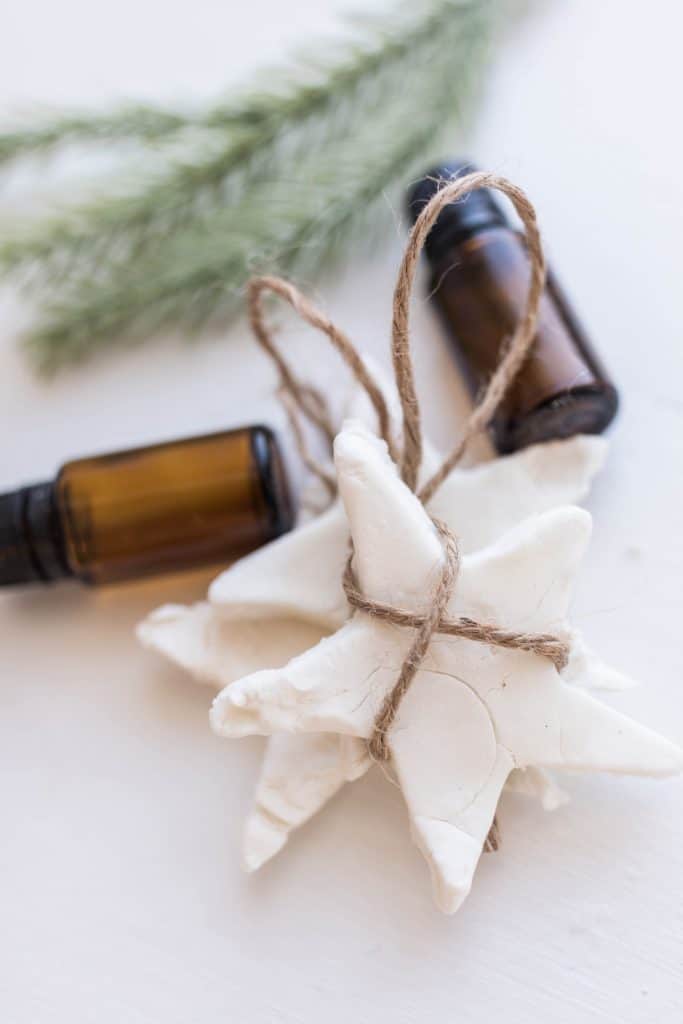
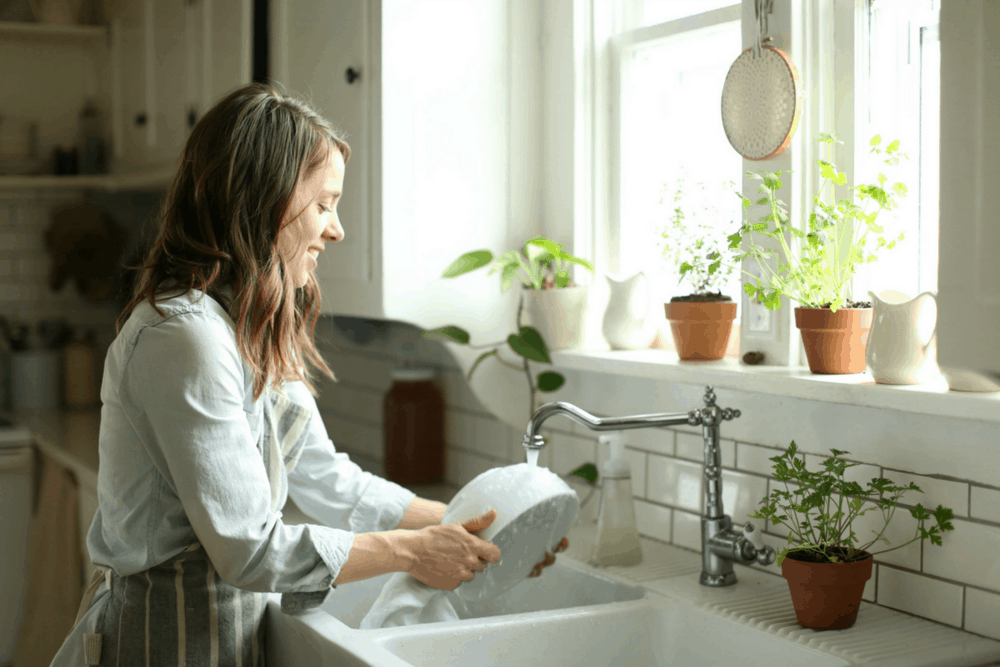
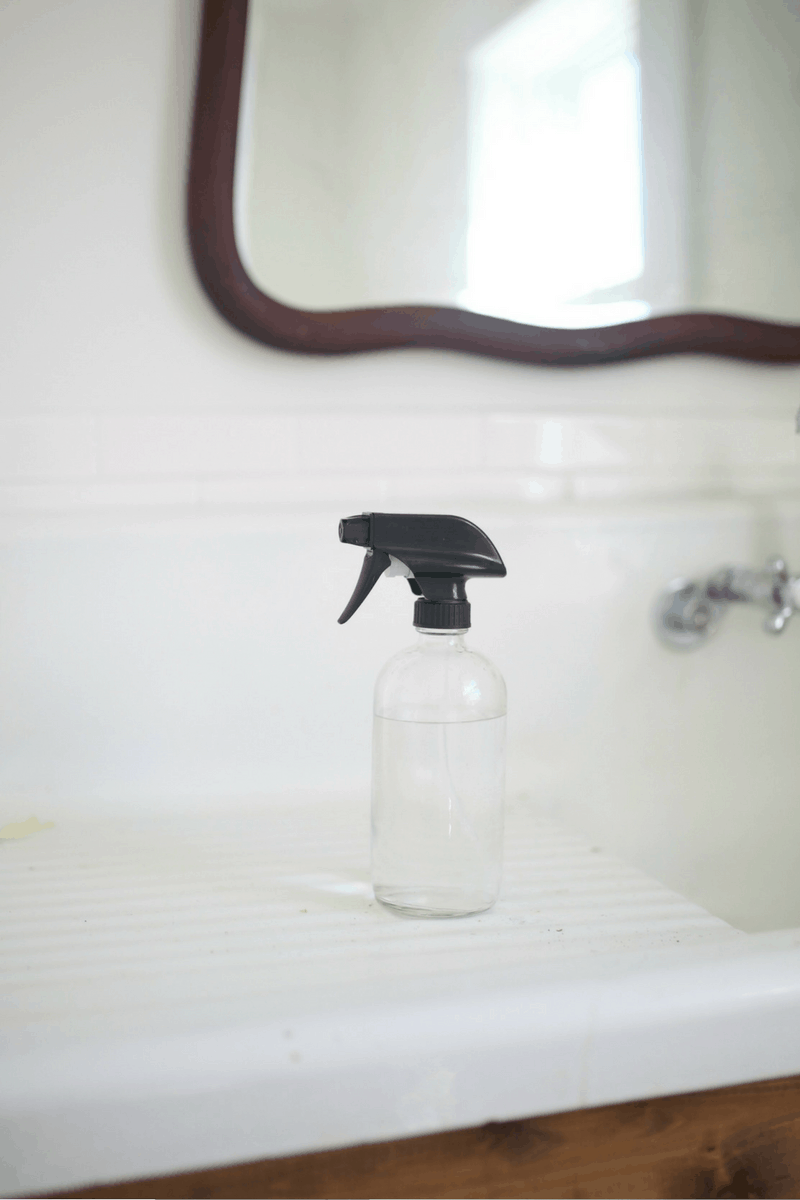
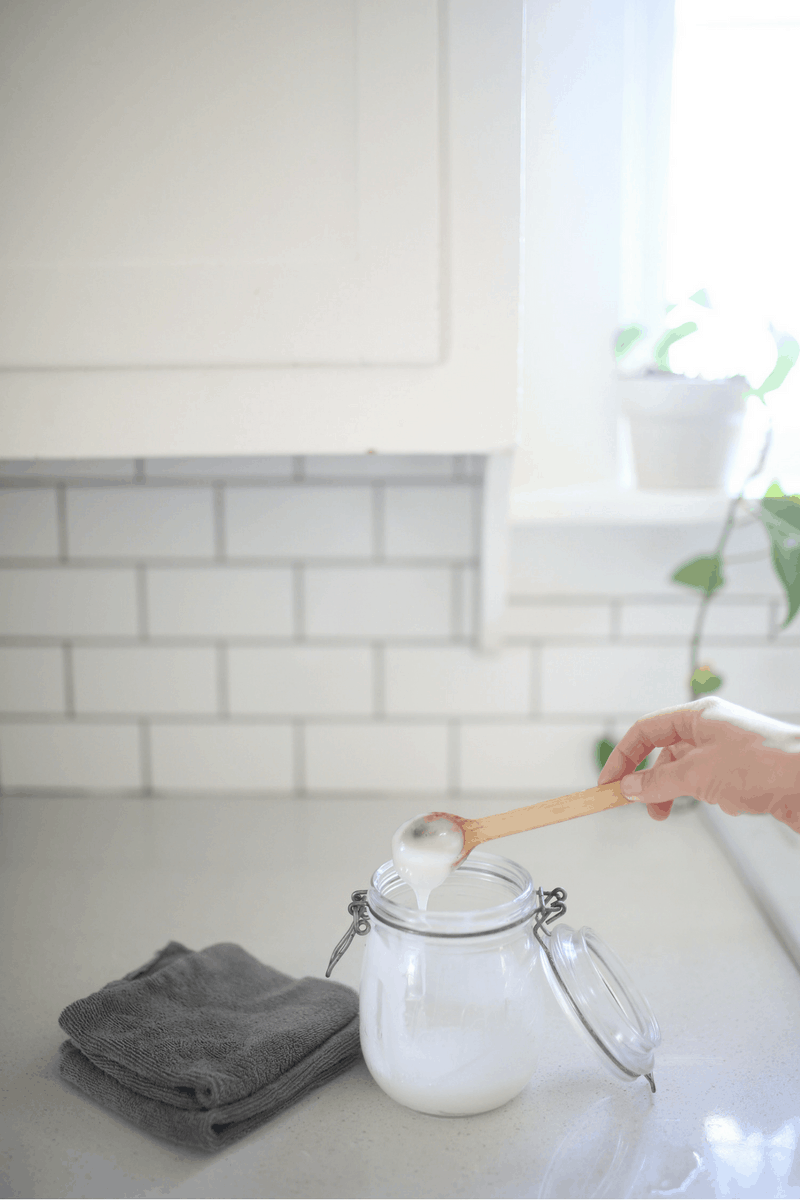
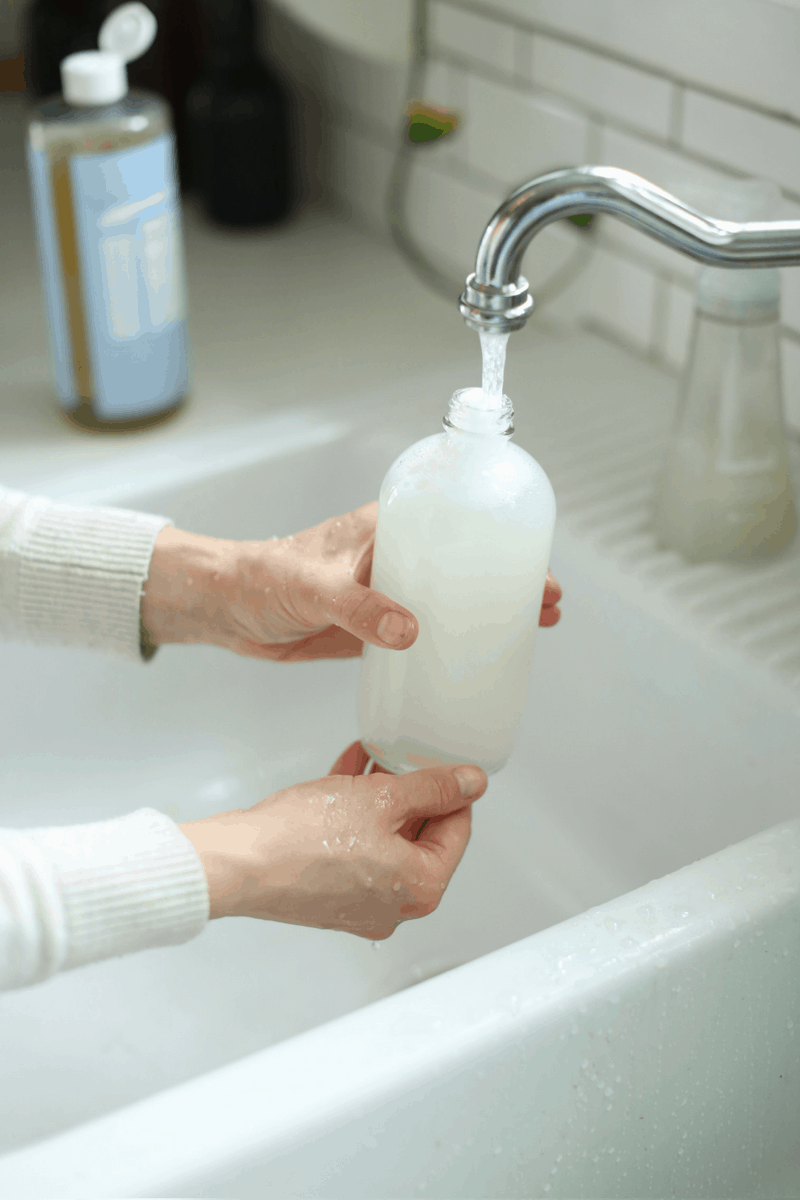
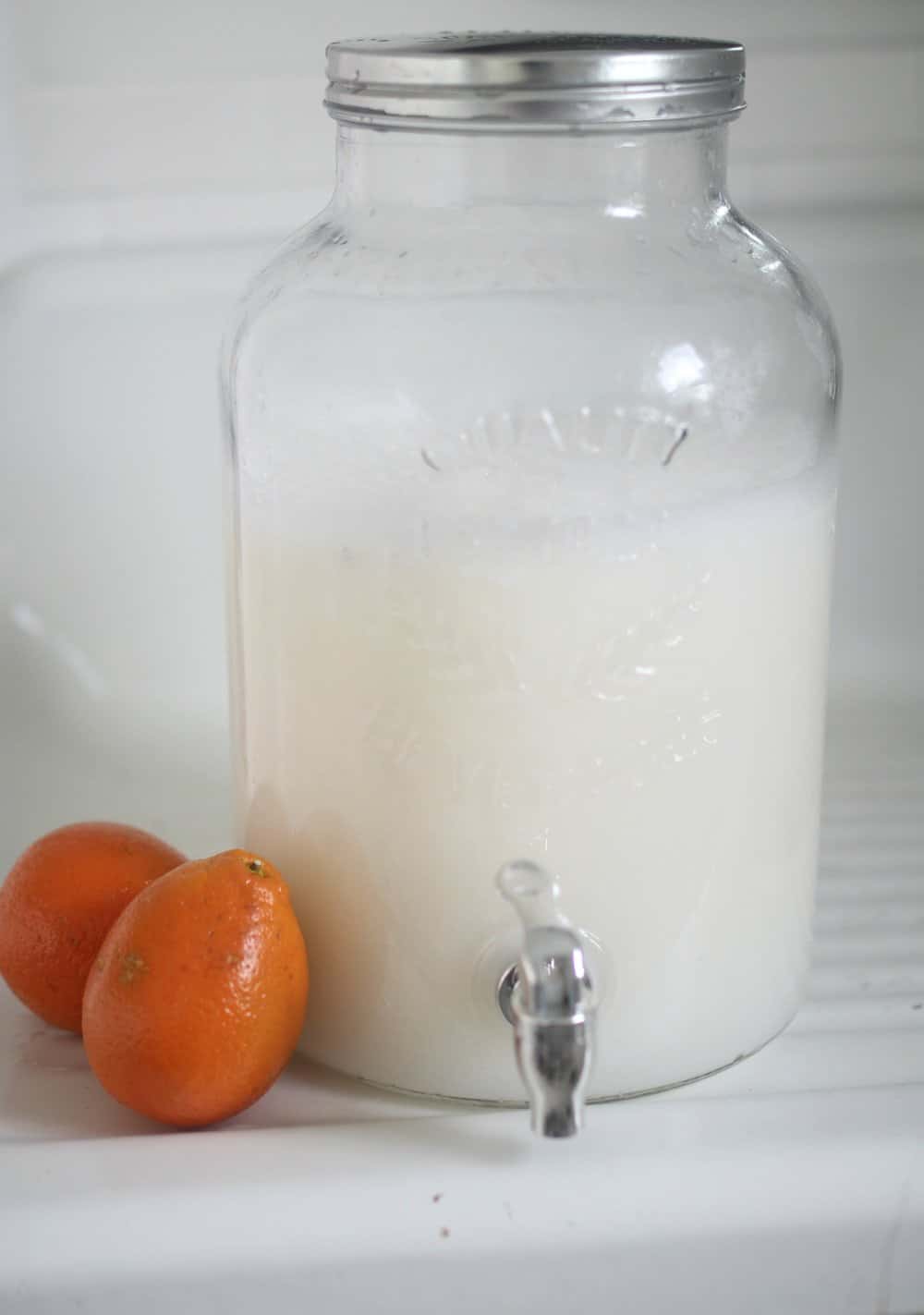
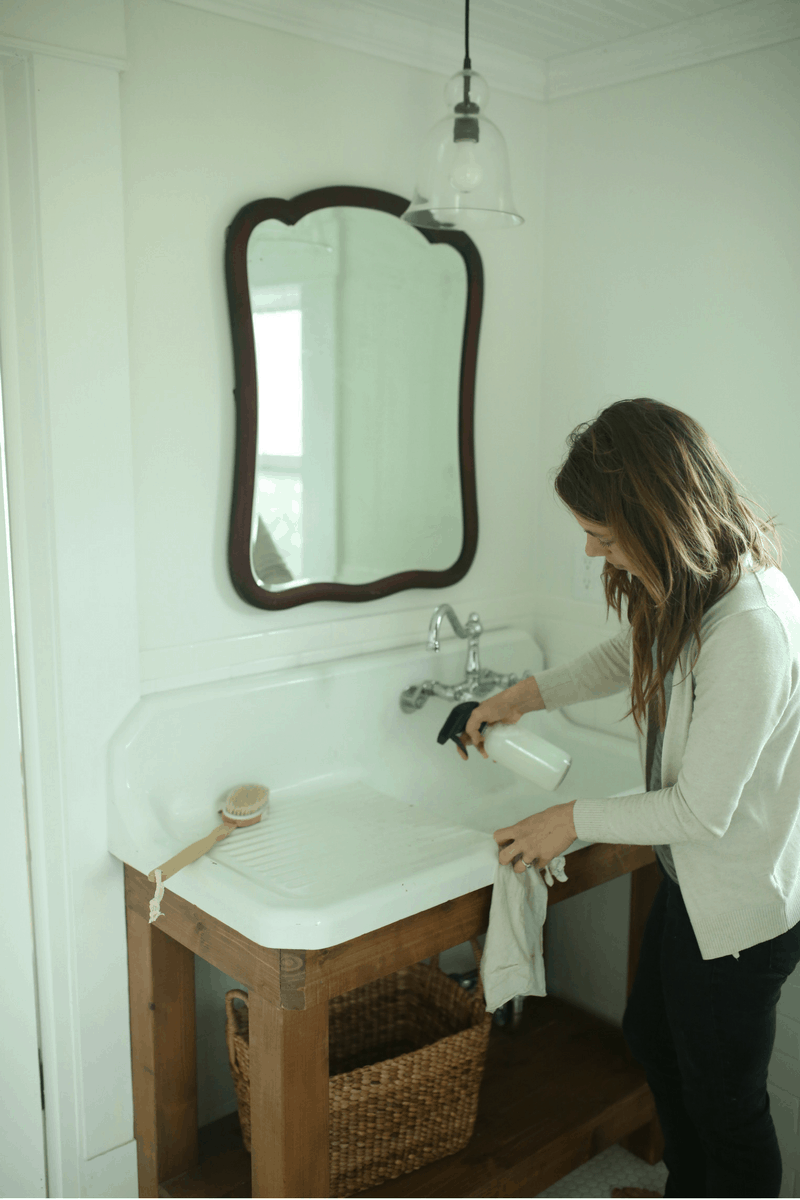
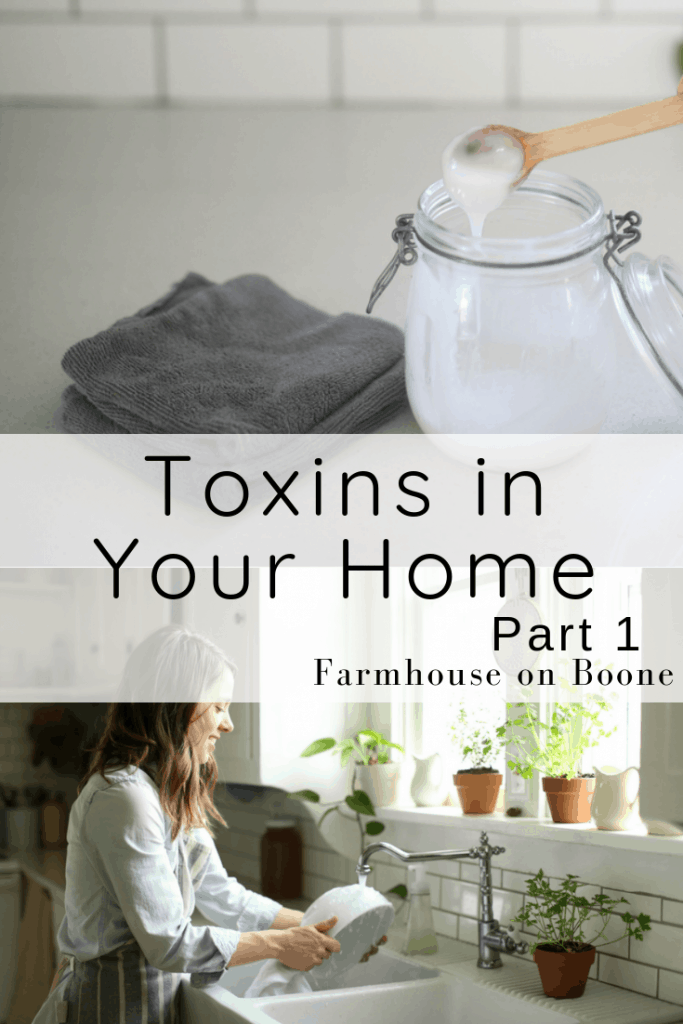

Francis says
I love your information so much. Thank you for all the time you spent informing us of a better way of living and eating.
Francis
Emily says
Hi there! Just found your channel/website this week and have been loving it. I’m so impressed and have been so helped with the info (minimalist baby necessities). Wondering if you have anything on cleaningbathroom mildew off of tiles and shower curtain. We live in New Jersey and I guess it’s fairly humid in our bathroom even with a window to the outdoors. I’ve been using bleach to deal with it, but would love an alternative!
Marilyn says
When it comes to getting rid of the toxins in my home, it can feel like a high hill to climb! Chemicals are everywhere. I am trying to get to lessen the chemical load so this article was very insightful.
Deanna says
I have noticed that you use a bar dish soap. Can you tell me what brand(s) work well for you?
Anonymous says
Hi Lisa, the links in this blog post are all broken.